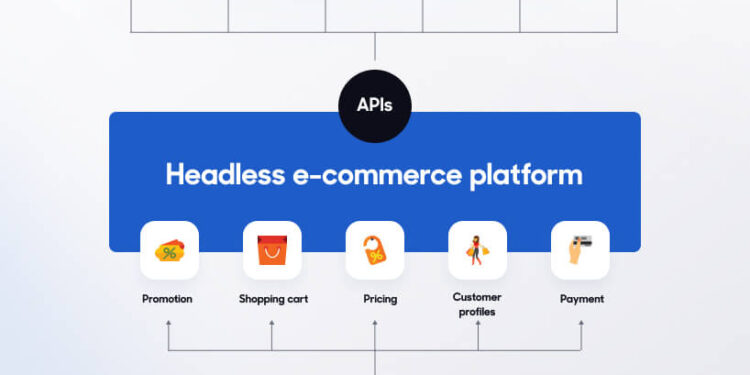Most businesses are setting up online shopping platforms to boost their sources of revenue. Online shopping platforms are available in different forms, and one of the common types is the headless e-commerce platform.
If you’re new to headless e-commerce, this article is for you. In this guide, we highlight some of the features of headless e-commerce platforms. Also included are some of the benefits of headless e-commerce solutions over conventional e-commerce.
What is a Headless E-Commerce Platform?
Headless e-commerce solutions are decoupled, meaning that the frontend and backend units are separate. The backend houses the database and APIs responsible for processing requests from the storefront. The frontend unit receives user requests and displays them on the screen. The frontend or storefront is built using web frameworks.
Benefits of Headless E-Commerce Platforms
Most online stores have been shifting from traditional e-commerce platforms to headless solutions for a while now. Headless solutions offer plenty of benefits and are easier to manage than conventional platforms. Below are some of the top benefits of headless e-commerce platforms.
Good Customer Experience
When it comes to online businesses, customer experience is king. Statistics show that customers will go where they get the best shopping experience. A headless e-commerce platform offers the best customer experience. The reason is that the frontend is lightweight and is built using the latest web frameworks.
Requests are handled using APIs, meaning that customers get faster responses. It is also easier to integrate new APIs that will improve customer experience.
Cloud-Native Support
Most business owners host the sites using third-party hosting services. In other cases, some companies host their e-commerce platform on in-house servers. Both hosting services are pretty expensive and require the user to have a good grasp of technology.
On the other hand, headless e-commerce platforms have native cloud support. One such example is Virto Commerce, and you can visit the website for more info about the platform. An e-commerce platform with inbuilt cloud services comes with either Azure, AWS, or IBM cloud support. Another good thing about cloud-native support is that you do not need to update your site manually.
Easy to Integrate New Features
Adding new features to a headless e-commerce platform is very easy. Since both the front and backend are separate, developers can add new features and try out new frameworks or APIs. Developers also get the freedom to use frameworks or programming languages they are comfortable with.
Bottom Line
If you’re still on edge thinking about which type of e-commerce platform to go for, we suggest going for a headless solution. Headless e-commerce platforms are easier to manage and do not require too much technical knowledge.
A headless e-commerce platform also offers the best customer experience, which is essential for any online business. There are plenty of headless e-commerce solutions in the market. Depending on your budget, you can choose between open-source or premium solutions.
While you’re at it, consider other features such as customer support, scalability, and ease of deployment. If you’re not a techie, you can ask a tech consultant for their opinion.











